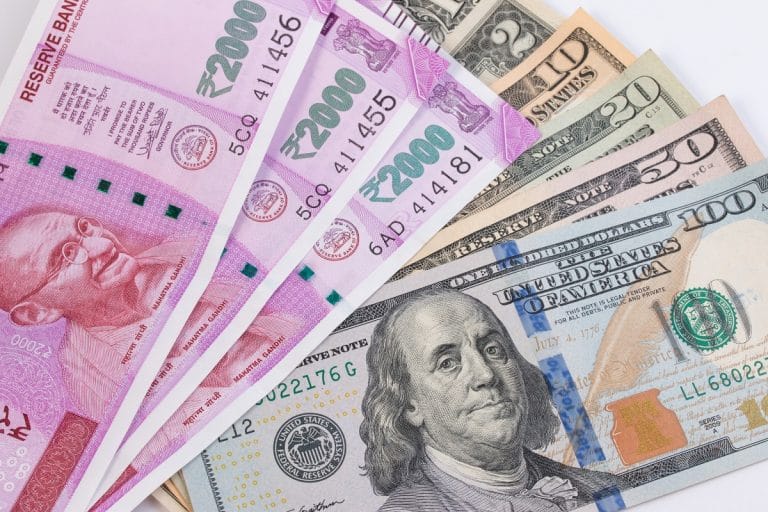The Indian rupee on Thursday hit an all time record low of 80.73 against the US dollar, down by almost one percent in the morning trading hours from Wednesday’s closing of 79.97.
The Indian currency’s plunge followed the US Federal Reserve hiking interest rates by 75 basis points on Wednesday and giving a more hawkish than expected projection for future rate cuts.
This has led to the US dollar index hitting a new 20-year high at 111.72, plunging currency exchange values in Asia and elsewhere.
The fresh fall in rupee value has triggered expectations of another round of spike in remittances by expat Indians, especially from the Gulf region, to India.
Historically, the weakening trend of rupee led to a surge in non-resident Indian (NRI) remittances to the South Asian country, as expats can earn more bucks for each dollar remitted.
NRIs based in the Gulf region account for a larger chunk of expat remittances to India.
Rupee’s previous record low against the greenback was 80.12 reached late in August.
Currency market experts expected further strengthening of the dollar index in near-term, adversely affecting the rupee value.

“Powell delivered a super hawkish hike by indicating clearly that the central bank is willing to risk recession to get inflation back down from 8 percent to below their target level of 2 percent,” Himanshu Gupta, vice-president, Globe Capital Market, told Arabian Business.
“At a time when the West is witnessing energy crises and food price shock, such a statement opens the door for Fed to hike for longer and keep rates elevated till inflation pressures abate. This is going to be positive for the dollar Index, which is now an interplay of relative monetary policy hawkishness and also energy crises,” Gupta said.
Gupta said he expected the dollar-rupee rate to grind higher with the dollar Index but at a slower pace.
“Rupee can cross even 81 level [against $] in the near-term and the medium range could be 81-79,” he said.

Ajay Kedia, managing director of Kedia Commtrade and Research said though rupee value has been impacted by the US Fed raising interest rate, further movement of the Indian currency would depend on the steps taken by India’s central bank.
“Crude prices have come down from their highs and inflation figures in India are still somewhat in a comfort zone,” Kedia said.
Banking circles expect a spike in remittances in the coming weeks in the wake of fresh fall in rupee value.
“Rupee’s weakening will help remittance inflows to India, especially from the Middle East region,” a senior executive with an Indian public sector bank said.
Kedia said the onset of festival season in India from September onwards generally sees high NRI remittances, especially from the Gulf region, during the period.

“The current plunge in rupee exchange value could add to the surge in expat remittances this time,” Kedia said.
Market experts said the fall in rupee value would lead to ballooning of India’s trade gap and capital outflows, raising new risks for the Indian currency.
Total expat remittances to India were estimated to be a little over $15 billion in the last quarter of 2021, according to available data by market research firms.








